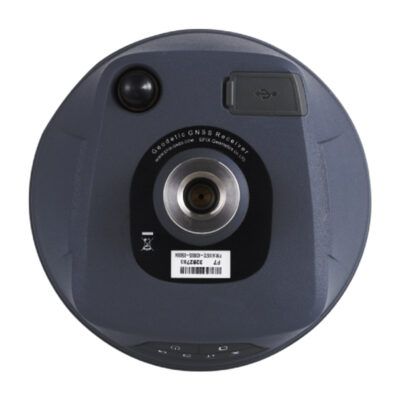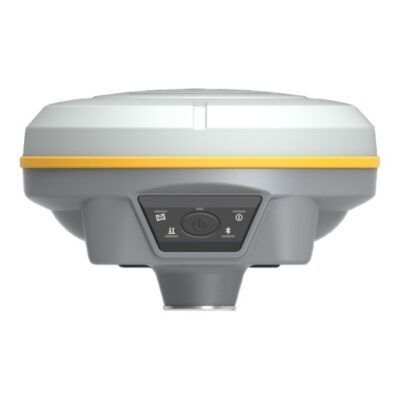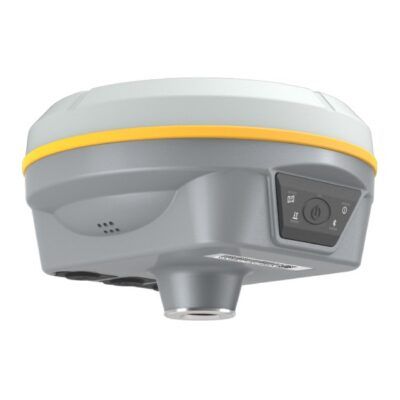GNSS
The difference between GNSS and GPS explained
What is the difference between GPS receivers and GNSS receivers?
Satellite navigation is a system of satellites that provide autonomous geo-spatial positioning with global coverage and allow small electronic receivers to determine location (longitude, latitude, and altitude/elevation) using time signals transmitted from satellites. Often times the terms “GNSS” and “GPS” are used interchangeably but there are key differences between the two:
GNSS
GNSS stands for Global Navigation Satellite System, and is the standard generic term for satellite navigation systems that provide autonomous geo-spatial positioning with global coverage. This term includes e.g. the GPS, GLONASS, Galileo, Beidou and other regional systems. GNSS is a term used worldwide The advantage to having access to multiple satellites is accuracy, redundancy and availability at all times. Though satellite systems don’t often fail, if one fails GNSS receivers can pick up signals from other systems. Also if line of sight is obstructed, having access to multiple satellites is also a benefit. Common GNSS Systems are GPS, GLONASS, Galileo, Beidou and other regional systems. A GNSS receiver can use signals from any positioning satellite, not just the ones in the GPS system. This means that even if all of the GPS signals are blocked, it can pick up signals from any of the other satellite systems worldwide. This flexibility makes GNSS receivers much more accurate and reliable than GPS technology alone. With GNSS, you can be confident that you are getting the best result possible, wherever and whenever you need it.
GPS
The United States’ Global Positioning System (GPS) consists of up to 31 medium Earth orbit satellites in six different orbital planes, with the exact number of satellites varying as older satellites are retired and replaced. Operational since 1978 and globally available since 1994, GPS is currently the world’s most utilized satellite navigation system. A GPS receiver can only use signals from the 31 satellites in the Global Positioning System, and if too many of these signals are blocked, the receiver becomes useless until it can find a signal again. So GPS is just the United States’ satellite system instead of the satellite systems of multiple countries.
You’ll notice that we often still use the term ‘GPS’ instead of ‘GNSS’ on this website because a lot of people are only familiar with GPS and not so much with GNSS, so to avoid misunderstanding we often still call it GPS.
some popular gnss receivers
Purpose and Coverage
GPS is a system developed and operated by the United States government for both military and civilian use. It consists of a network of satellites and ground-based control stations that provide precise location and timing information to users around the world.
GNSS, on the other hand, is a term used to refer to any satellite-based navigation system, including GPS as well as other systems such as GLONASS (Russia), Galileo (Europe), BeiDou (China), and QZSS (Japan). The main purpose of GNSS is to provide location and navigation information to users globally.
Number of Satellites and Accuracy
The number of satellites in a system can affect the accuracy of location information provided to users. GPS currently has 31 operational satellites in its network, while GLONASS has 24, Galileo has 30, BeiDou has 35, and QZSS has 7.
Due to the larger number of satellites, GNSS can provide more accurate location information than GPS alone. However, the accuracy of location information also depends on other factors such as the quality of the receiver and the presence of any interference or obstructions.
Availability and Reliability
GPS is widely available and reliable, with a wide range of applications in industries such as transportation, agriculture, and recreation. However, its availability and reliability can be affected by factors such as signal jamming or interference.
GNSS, on the other hand, offers more robust availability and reliability due to the use of multiple systems. If one system is unavailable or unreliable, users can still access location and navigation information from other systems. This can be particularly beneficial in areas where GPS coverage is limited or unreliable.
Military Use
GPS was initially developed for military use and continues to be operated by the U.S. Department of Defense. The military use of GPS includes navigation, targeting, and timing for military operations. However, the system has also been made available for civilian use, with the U.S. government committing to maintaining the availability of GPS signals for both military and civilian purposes.
Other GNSS systems, such as GLONASS and BeiDou, were also developed for military use and are operated by their respective countries’ armed forces. This can raise concerns about potential disruption or jamming of signals during military conflicts.
Future Developments
The future of GNSS and GPS technology is constantly evolving, with new developments and advancements being made to improve accuracy, availability, and functionality. One of the major developments in the field is the integration of different GNSS systems to create a multi-constellation system, providing even more accurate and reliable location and navigation information.
Another development is the integration of augmentation systems, such as the European Union’s EGNOS and the U.S.’s WAAS, which can improve the accuracy of location information by up to 10 times.
In addition, the use of 5G technology with GNSS and GPS systems can enable new applications such as precise positioning in urban areas, and improved accuracy and reliability for autonomous vehicles.
Conclusion
In conclusion, GNSS and GPS are both satellite-based technologies that provide location and navigation information to users. While GPS is widely available and affordable, GNSS offers more robust coverage and accuracy through the use of multiple systems. However, the cost and access to the systems, as well as military use, can vary between GNSS systems. The future of GNSS and GPS technology is constantly evolving with new developments and advancements being made to improve accuracy, availability, and functionality. It is important to understand these differences and the specific requirements of each application to make an informed decision on which technology to use.
Which GNSS receiver is best for you?
All the GNSS receivers that we sell, the name says it already, are multi-constellation, thus GNSS, receivers. They are able to collect data from all the different satellite systems and because of that they can be way more accurate and reliable than GPS receivers. With more and more GNSS receivers getting released we understand it can be quite a search to find the correct one for you. So we made it really easy for you. Check out the article below to find out which GNSS receiver suits you best:








